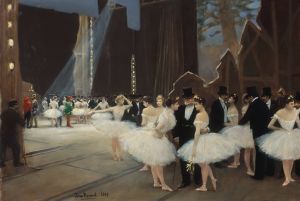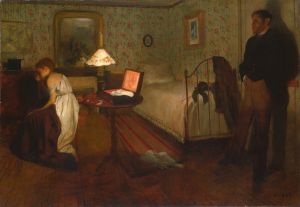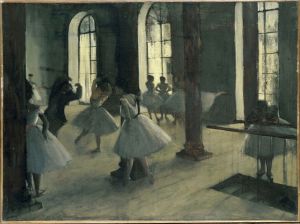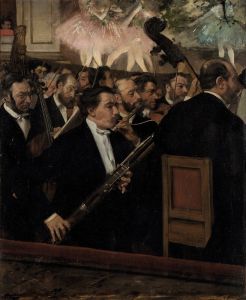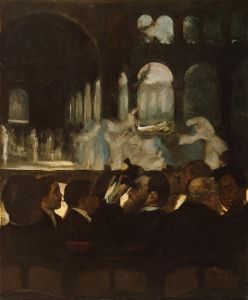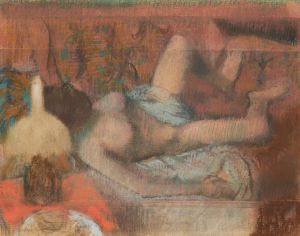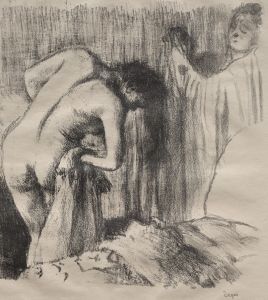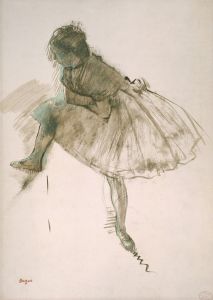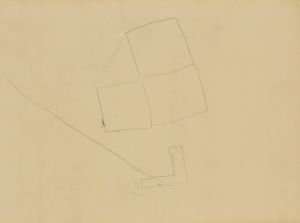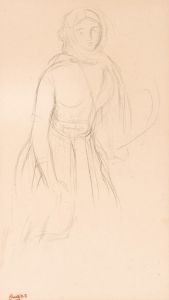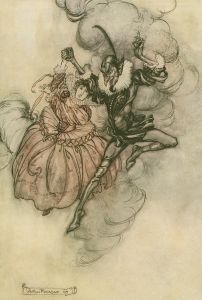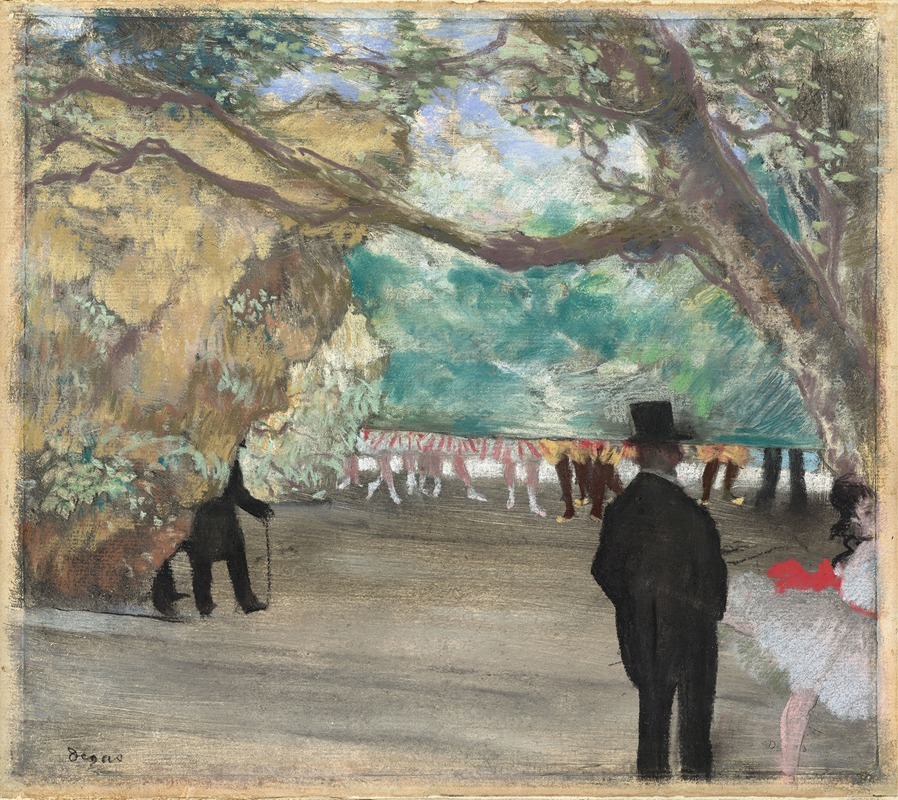
The Curtain
A hand-painted replica of Edgar Degas’s masterpiece The Curtain, meticulously crafted by professional artists to capture the true essence of the original. Each piece is created with museum-quality canvas and rare mineral pigments, carefully painted by experienced artists with delicate brushstrokes and rich, layered colors to perfectly recreate the texture of the original artwork. Unlike machine-printed reproductions, this hand-painted version brings the painting to life, infused with the artist’s emotions and skill in every stroke. Whether for personal collection or home decoration, it instantly elevates the artistic atmosphere of any space.
Edgar Degas, a prominent French artist associated with the Impressionist movement, is renowned for his works that capture the dynamism and grace of ballet dancers. Among his extensive oeuvre, "The Curtain" is a notable painting that exemplifies his fascination with the world of dance and theater. While not as widely discussed as some of his other masterpieces, "The Curtain" reflects Degas's innovative approach to composition and his keen observation of movement and atmosphere.
"The Curtain" is believed to have been created in the late 19th century, a period when Degas was deeply immersed in exploring the theme of ballet. This painting, like many of his works, offers a glimpse into the behind-the-scenes world of the theater, a subject that captivated Degas throughout his career. His interest in this theme was partly due to his desire to capture modern life in Paris, and the ballet provided a rich tapestry of contemporary culture, elegance, and the interplay of light and shadow.
Degas's technique in "The Curtain" is characteristic of his mature style, where he often employed pastels to achieve a soft yet vibrant effect. This medium allowed him to experiment with color and texture, capturing the ephemeral quality of stage lighting and the delicate movements of the dancers. The use of pastels also enabled Degas to layer colors, creating depth and a sense of immediacy in his compositions.
In "The Curtain," Degas's composition is likely to focus on the moment just before or after a performance, a time when the anticipation or the aftermath of the dance is palpable. This choice of moment underscores Degas's interest in the transient and often unseen aspects of performance art. His ability to convey the tension and excitement of these moments is a testament to his observational skills and his innovative approach to depicting modern life.
Degas's fascination with ballet was not merely an artistic choice but also a reflection of his personal interests and social milieu. The Paris Opera, where many of his ballet scenes are set, was a hub of cultural activity and a symbol of the city's artistic vibrancy. Degas's frequent visits to the opera allowed him to study the dancers closely, capturing their rehearsals, performances, and moments of rest with an unparalleled intimacy.
While "The Curtain" may not be as extensively documented as some of Degas's other works, it remains an important piece within his body of work, illustrating his mastery of capturing movement and atmosphere. The painting is a testament to Degas's ability to blend traditional techniques with modern subjects, creating works that resonate with both the energy of the contemporary world and the timeless beauty of art.
Overall, "The Curtain" by Edgar Degas is a reflection of the artist's enduring fascination with the ballet and his innovative approach to capturing the nuances of performance. Through his use of pastels and his keen eye for composition, Degas offers viewers a window into the vibrant world of 19th-century Parisian theater, a world that continues to captivate audiences today.





